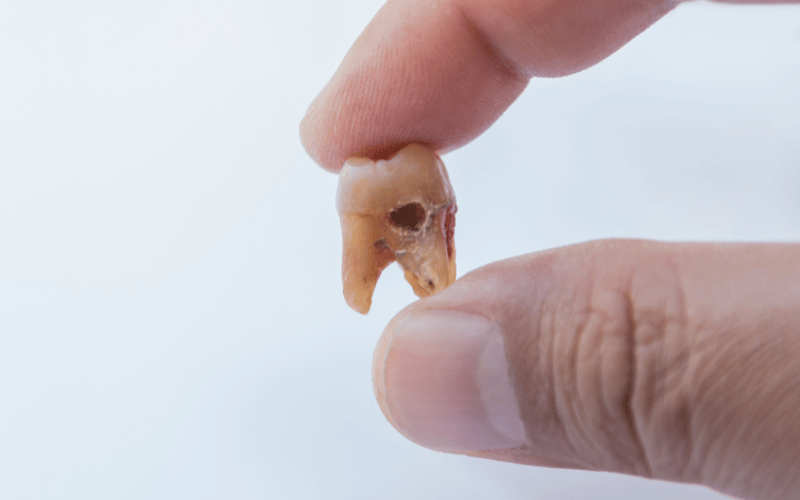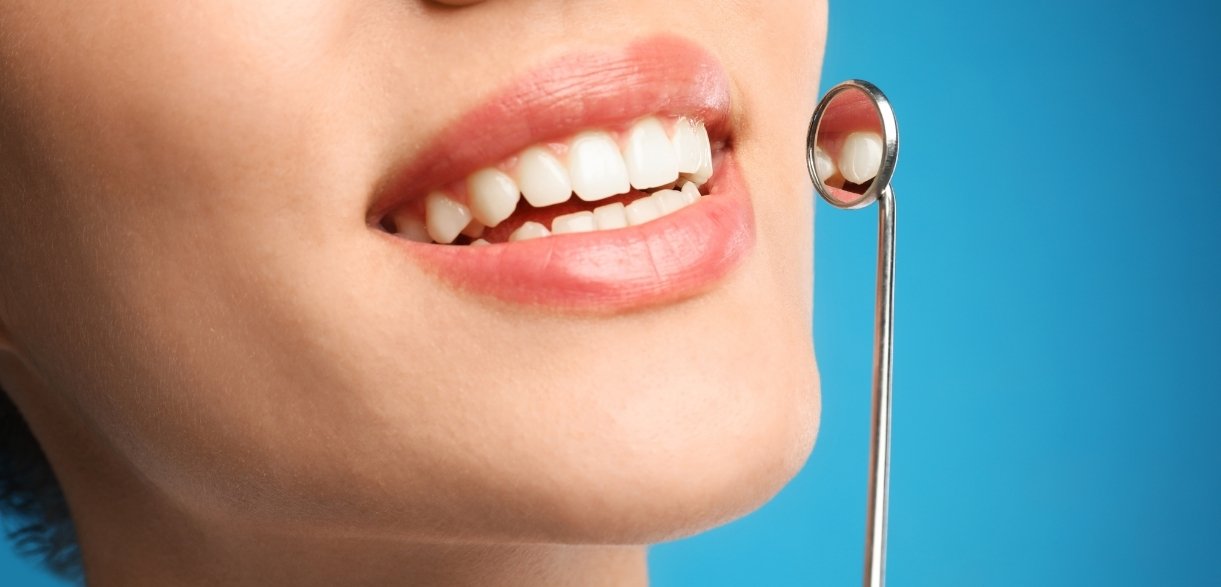1520 Green Oak Place, Suite B Kingwood, Tx 77339
What Are The Signs And Symptoms Of Tooth Decay In Adults?

Tooth decay, also known as dental caries or cavities, is a common dental problem caused by the interaction of bacteria, acids, food particles, and saliva in the mouth. It begins with the buildup of plaque, a sticky film of bacteria, on the tooth surface. As bacteria feed on sugars from food, they produce acids that attack the tooth enamel, leading to demineralization and the formation of cavities. Symptoms of tooth decay typically start subtly, with white spots indicating early enamel damage.
As decay progresses, symptoms worsen, including tooth sensitivity to temperature and sweets, persistent toothaches, visible pits or holes in the teeth, and discoloration. Bad breath and an unpleasant taste may also accompany decay due to bacterial growth.
Without intervention, decay can advance, leading to infections, abscesses, and tooth loss. Preventive measures such as regular brushing, flossing, and dental check-ups are essential to detect decay early and prevent further damage, emphasizing the importance of maintaining good oral hygiene habits.
Common Signs and Symptoms Of Tooth Decay
A. Early warning signs of tooth decay:
1. Sensitivity to hot, cold, or sweet foods: Tooth sensitivity is often one of the first indicators of tooth decay. When the enamel begins to deteriorate due to acid erosion from bacteria, nerves within the tooth become more exposed, leading to heightened sensitivity. Consuming hot, cold, or sweet foods and beverages can trigger sharp, fleeting pain or discomfort in affected teeth.
2. Discoloration or spots on the teeth: Discoloration or white spots on the teeth can signal the onset of tooth decay. These spots indicate areas where minerals have been lost from the enamel, a process known as demineralization. The appearance of brown, black, or white spots may vary depending on the extent of decay and can be particularly visible on the front teeth or along the gum line.
3. Persistent bad breath: Persistent bad breath, also known as halitosis, can be a symptom of tooth decay. Bacteria that contribute to decay produce foul-smelling gases as they metabolize food particles in the mouth. Decaying food particles lodged in cavities or between teeth can also emit unpleasant odors. Chronic bad breath that persists despite proper oral hygiene may indicate underlying dental issues, including tooth decay.
B. Advanced symptoms of tooth decay:
1. Toothache or pain while chewing: Tooth decay can lead to increased sensitivity and discomfort, particularly when chewing or biting down on food. The pain may be sharp, throbbing, or constant, depending on the severity of the decay and the involvement of the tooth’s nerve. Advanced decay may cause inflammation or infection within the tooth, resulting in heightened pain that can be difficult to alleviate without professional intervention.
2. Visible holes or pits in the teeth: Advanced tooth decay can cause visible damage to the tooth structure, forming holes or pits on the tooth surface. Depending on the extent of decay, these cavities may vary in size and depth. They are typically accompanied by discoloration and may be visible to the naked eye or detected during a dental examination. Visible cavities indicate significant enamel and dentin erosion, requiring prompt treatment to prevent further deterioration.
3. Swelling or pus around the tooth: In severe cases of tooth decay, bacterial infection can spread from the tooth’s pulp to the surrounding tissues, leading to inflammation and pus formation. Swelling may occur around the affected tooth, accompanied by tenderness, redness, and warmth in the surrounding gums. Pus formation is a sign of an abscess, a serious dental condition that requires immediate attention to prevent complications such as bone loss or systemic infection. Swelling or pus around a tooth indicates advanced decay and necessitates urgent dental intervention to address the infection and preserve oral health.
Risk Factors for Tooth Decay in Adults:
A. Age-related factors: As individuals age, they may experience changes in their oral health that increase the risk of tooth decay. Receding gums, decreased saliva production, and existing dental restorations can contribute to a higher susceptibility to decay. Age-related conditions like dry mouth (xerostomia) and decreased dexterity may impact oral hygiene practices, making it more challenging to remove plaque and bacteria from the teeth effectively.
B. Lifestyle habits: Certain lifestyle habits can significantly influence the risk of tooth decay in adults. Poor dietary choices, particularly frequent consumption of sugary or acidic foods and beverages, can accelerate enamel erosion and promote cavity formation. Inadequate oral hygiene practices, such as irregular brushing and flossing, can allow plaque buildup to accumulate, increasing the likelihood of decay. Tobacco use, whether smoking or chewing tobacco, also contributes to oral health problems, including tooth decay and gum disease.
C. Medical conditions and medications: Various medical conditions and medications can impact oral health and contribute to tooth decay in adults. Conditions such as diabetes and autoimmune disorders may affect saliva production or compromise the body’s ability to regulate blood sugar levels, increasing the risk of oral infections and decay. Certain medications, such as antihistamines, antidepressants, and antacids, can cause dry mouth as a side effect, reducing saliva flow and leaving the teeth more vulnerable to decay.
D. Genetic predisposition: Genetic factors can play a role in determining an individual’s susceptibility to tooth decay. Some people may inherit thinner enamel or crowded teeth, making it more challenging to maintain good oral hygiene and prevent cavities. Genetic variations in saliva composition and oral bacteria may also influence the risk of developing decay. While genetics can contribute to predisposition, practicing good oral hygiene and healthy lifestyle habits remain essential for preventing tooth decay regardless of genetic factors.
Diagnosis and Treatment Options:
A. Dental examination and X-rays:
Diagnosing tooth decay typically begins with a comprehensive dental examination, where the dentist inspects the teeth for signs of decay and assesses overall oral health. X-rays may detect decay between teeth or beneath the enamel surface, providing a clearer picture of the extent of damage.
B. Preventive measures:
1. Proper oral hygiene practices, including brushing at least twice daily, flossing daily, and using fluoride toothpaste, are essential for removing plaque and preventing decay.
2. Regular dental check-ups allow for early detection and treatment of tooth decay before it progresses to more advanced stages.
3. Adopting a balanced diet low in sugary and acidic foods helps minimize the risk of enamel erosion and cavity formation.
C. Treatment options:
1. Dental fillings: Used to repair small to moderate cavities, dental fillings involve removing decayed tooth material and filling the cavity with a dental material such as composite resin, amalgam, or porcelain.
2. Crowns or dental implants: For more extensive decay or damage, crowns or dental implants may be recommended to restore the shape, function, and appearance of the tooth.
3. Root canal therapy: When decay reaches the inner pulp of the tooth, causing infection or inflammation, root canal therapy may be necessary to remove infected tissue, clean the root canal, and seal the tooth to prevent further infection.
4. Tooth extraction: In cases of severe decay where the tooth cannot be saved, extraction may be the only option to prevent the spread of infection and preserve overall oral health.
Complications of Untreated Tooth Decay:
A. Spread of infection: Untreated tooth decay can lead to the spread of infection from the affected tooth to surrounding tissues, including the gums, jawbone, and even the bloodstream. Bacteria from the decayed tooth can enter the bloodstream, causing systemic infections and potentially affecting other organs and systems in the body.
B. Gum disease and periodontitis: Advanced tooth decay can contribute to the development of gum disease (gingivitis) and periodontitis, which involve inflammation and infection of the gums and supporting structures of the teeth. Bacteria from decay can irritate and inflame the gums, leading to symptoms such as redness, swelling, bleeding, and eventual gum recession. Gum disease can progress without treatment, causing tissue and bone loss around the teeth and increasing the risk of tooth loss.
C. Loss of teeth and impact on overall health: Chronic untreated tooth decay can ultimately result in the loss of affected teeth. Tooth loss can have significant consequences for oral health, including difficulty chewing, speaking, and maintaining proper nutrition. Additionally, missing teeth can affect the alignment of neighboring teeth, leading to bite problems and further dental complications. Moreover, poor oral health stemming from untreated decay has been linked to systemic health issues such as cardiovascular disease, diabetes, and respiratory infections, highlighting the importance of addressing decay promptly to preserve overall health and well-being.
Lifestyle Tips for Preventing Tooth Decay:
A. Brushing and flossing techniques: Use gentle circular motions, fluoride toothpaste, and a soft-bristled toothbrush to brush your teeth at least twice daily. Remember to brush the tongue and roof of the mouth. Floss once daily to remove plaque and food particles from between teeth and along the gum line, using a gentle back-and-forth motion.
B. Dietary recommendations: Limit consumption of sugary and acidic foods and beverages, such as sodas, candies, and citrus fruits, which can contribute to enamel erosion and cavity formation. Instead, opt for a balanced diet rich in fruits, vegetables, lean proteins, and dairy products, which provide essential nutrients for dental health, including calcium and phosphorus.
C. Importance of fluoride: Use fluoride toothpaste and mouthwash to strengthen tooth enamel and prevent decay. Consider fluoride treatments or supplements if you’re at a higher risk of cavities. Drink fluoridated water, as it helps remineralize enamel and reduce the risk of tooth decay.
D. Avoidance of tobacco and excessive alcohol consumption: Tobacco use, whether smoking or chewing tobacco, increases the risk of gum disease, oral cancer, and tooth decay. Quitting smoking and avoiding tobacco products can significantly improve oral health. Similarly, limit alcohol consumption, as excessive alcohol intake can contribute to dry mouth and increase the risk of decay and gum disease. Instead, drink water to stay hydrated and rinse your mouth after consuming alcohol to help minimize its effects on oral health.
Final Words!
By following proper oral hygiene practices, adopting a balanced diet, and avoiding harmful habits like smoking and excessive alcohol consumption, you can prevent tooth decay and related complications. Remember the importance of regular dental check-ups and treatments at Dentistry Of Kingwood to ensure optimal dental health and a confident smile. Take charge of your oral health today! Schedule your appointment at Dentistry Of Kingwood and smile brighter tomorrow.







